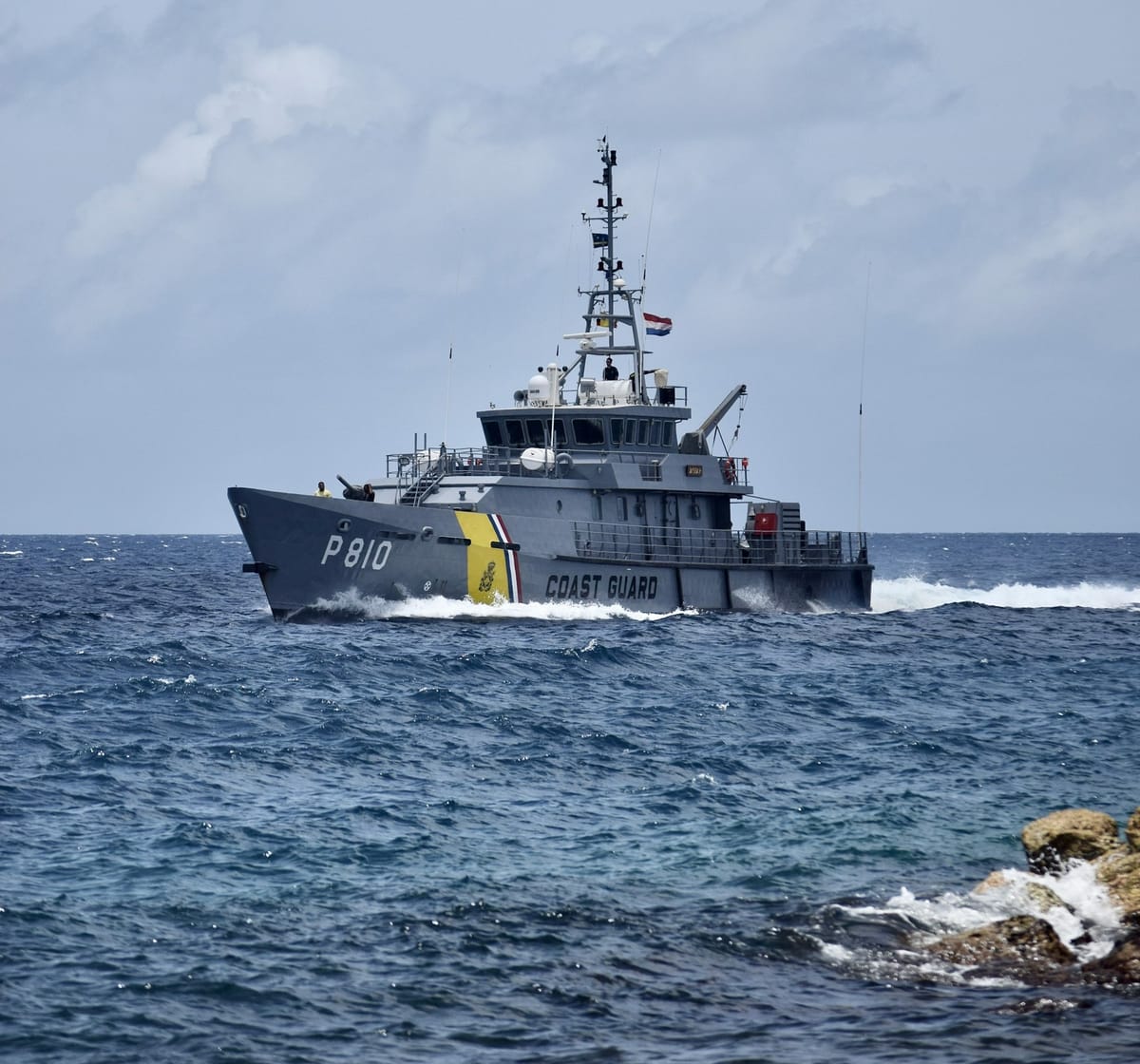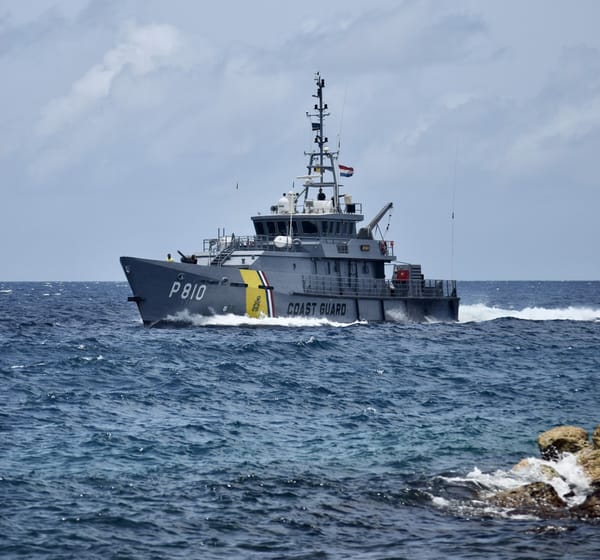U.S. Air Force Cyber Divisions and Psychological Operations Units: A Comprehensive Overview

Introduction
The United States Air Force has developed a sophisticated cyber and information warfare capability that spans across all three components: Active Duty, Air National Guard, and Air Force Reserve. As cyberspace emerged as a critical warfighting domain, the Air Force established specialized units to conduct operations ranging from offensive and defensive cyber operations to psychological operations and electronic warfare. This comprehensive overview examines the complete organizational structure of Air Force cyber and information warfare units as of 2025.

Sixteenth Air Force (Air Forces Cyber) - The Information Warfare Command
The Sixteenth Air Force (Air Forces Cyber) serves as the Air Force's Information Warfare Numbered Air Force, headquartered at Joint Base San Antonio-Lackland, Texas. Reactivated on October 11, 2019, following the merger of the Twenty-Fourth and Twenty-Fifth Air Forces, 16th Air Force consolidated the Air Force's cyberspace combat and support forces under a single command.
Mission: The Sixteenth Air Force provides global intelligence, surveillance and reconnaissance, cyber and electronic warfare, and information operations, and serves as the Service Cryptologic Component responsible to the National Security Agency/Central Security Service and the Service Cyber Component to US Cyber Command.
Key Responsibilities:
- Information warfare operations encompassing intelligence gathering and analysis
- Surveillance and reconnaissance operations
- Cyber warfare and electronic warfare operations
- Service component to U.S. Cyber Command
Active Duty Air Force Cyber Units
67th Cyberspace Wing
The 67th Cyberspace Wing, headquartered at Joint Base San Antonio-Lackland, Texas, is aligned under Sixteenth Air Force (Air Force Cyber), Air Combat Command. The wing serves as the 16th Air Force's execution arm for generating, projecting and sustaining combat power with the employment of cyberspace capabilities.
Mission: The wing presents combat cyberspace capabilities to the Service, United States Cyber Command, and the Joint Force. In this capacity, the wing acts as the Air Forces Cyber execution arm for conducting global cyberspace operations.
Key Facts:
- Comprised of more than 2,000 Airmen, civilians, and contractors across three operations groups
- 26 units at 7 locations worldwide
- Conducts network operations, defense, attack, and exploitation
Location: Joint Base San Antonio-Lackland, Texas
Subordinate Units:
- 67th Cyberspace Operations Group
- 26th Cyberspace Operations Group
- 690th Cyberspace Operations Group

688th Cyberspace Wing
The 688th Cyberspace Wing is the Air Force's premier cyberspace warfighting organization dedicated to delivering actionable intelligence and tactics, techniques, and procedures, deployable warfighter communications, engineering and installation capabilities, defensive cyber operations, and network security operations across the Air Force Information Network enterprise.
Mission: The wing provides organic operations training, cyber capability development, operational testing, and range capabilities to drive readiness across the Cyber domain.
Key Facts:
- Originally established in July 1953 as the Air Force Special Communications Center
- Evolved through various designations: Air Force Electronic Warfare Center (1975), Air Force Information Warfare Center (1993), Air Force Information Operations Center (2006)
- Became the 688th Information Operations Wing in 2009, assuming current name in September 2013
Location: Kelly Field Annex, Joint Base San Antonio-Lackland, Texas
Subordinate Units:
- 318th Cyberspace Operations Group
- 38th Combat Engineering and Installation Group
- 5th Combat Communications Group
- 690th Cyberspace Operations Group (shared with 67th CW)

Electronic Combat Units
The Air Force maintains specialized electronic warfare capabilities through its Electronic Combat Squadrons that operate EC-130H Compass Call and newer EA-37B aircraft.
55th Electronic Combat Group
- Location: Davis-Monthan Air Force Base, Arizona (Geographically Separated Unit from 55th Wing at Offutt AFB, Nebraska)
- Mission: Provides combat-ready EC-130H Compass Call aircraft, crews, maintenance and operational support to combatant commanders
Subordinate Squadrons:
- 41st Electronic Combat Squadron: Operational unit conducting electronic warfare missions
- 42nd Electronic Combat Squadron: Training squadron serving as the "schoolhouse" for EC-130H aircrew training
- 43rd Electronic Combat Squadron: Operational unit (first to transition to EA-37B in 2024)
- 755th Aircraft Maintenance Squadron: Maintains EC-130H fleet
- 755th Operations Support Squadron: Provides operational support
Key Facts:
- EC-130H Compass Call conducts airborne electronic attack missions
- Being replaced by EA-37B Compass Call based on Gulfstream G550 business jet
- Critical component of Suppression of Enemy Air Defense (SEAD) operations
Air National Guard Cyber and Information Operations Units
The Air National Guard operates several specialized cyber and information operations units across multiple states, providing unique capabilities that leverage civilian expertise.
193rd Special Operations Wing - "The Commando Solo Wing"
The 193rd Special Operations Wing, located at Harrisburg Air National Guard Base, Pennsylvania, is the Air Force's only airborne psychological operations broadcasting unit. The wing has recently transitioned from EC-130J Commando Solo III to MC-130J Commando II aircraft.
Mission: The 193rd provides highly trained, multi-capable, relevant, and resilient combat and support forces for psychological operations missions worldwide. Historically conducted airborne radio and television broadcasting missions using EC-130 aircraft.
Key Facts:
- Responsible for over 1,800 military and civilian personnel in 28 subordinate groups, squadrons and flights
- Only airborne psychological operations broadcasting platform for the entire U.S. military
- Transitioned from EC-130J (retired September 2024) to MC-130J Commando II
- Maintains high operations tempo with deployments worldwide

Location: Harrisburg Air National Guard Base, Middletown, Pennsylvania
Historical Operations:
- Operation Urgent Fury (Grenada, 1983)
- Operation Just Cause (Panama, 1989)
- Operations Desert Shield/Desert Storm (1990-1991)
- Operation Uphold Democracy (Haiti, 1994)
- Operation Iraqi Freedom (2003)
- Operation Enduring Freedom (Afghanistan)
Unit Motto: "Never seen, always heard"
175th Cyberspace Operations Group - Maryland Air National Guard
The 175th Cyberspace Operations Group, part of the 175th Wing at Martin State Air National Guard Base, Maryland, is the U.S. Air Force's only full-spectrum cyber operations group within a flying wing.
Mission: The 175th COG provides offensive and defensive cyberspace operations, cyber intelligence, and full-spectrum cyber capabilities in support of U.S. Cyber Command and Air Force networks.
Key Facts:
- Only cyberspace operations group in a flying wing (also operates A-10 Thunderbolt IIs)
- More than 350 members across five squadrons
- Continuously deploying personnel for six-month Title 10 deployments to Fort Meade supporting U.S. Cyber Command since 2016
- Part of the 24th Cyber National Mission Force
Location: Martin State Air National Guard Base, Middle River, Maryland (with one squadron at Fort Meade)
Subordinate Units:
- 175th Cyberspace Operations Squadron: Offensive cyber operations
- 276th Cyberspace Operations Squadron: Offensive cyber operations
- 275th Cyberspace Operations Squadron: Defensive cyber operations (Cyber Protection Team mission)
- 135th Intelligence Squadron: Cyber intelligence, surveillance and reconnaissance
- 275th Operations Support Squadron: Operational support
252nd Cyberspace Operations Group - Washington Air National Guard
The 252nd Cyberspace Operations Group provides highly trained and qualified cyberspace and intelligence professionals to combatant commanders as part of the Washington Air National Guard's 194th Wing.
Mission: Ensures squadrons are trained and evaluated to be mission-ready to support cyber, intelligence and expeditionary communications missions. Provides oversight for cyberspace and intelligence operational forces in direct support of Air Combat Command, Air Force Space Command, and United States Cyber Command.
Key Facts:
- Rich heritage dating back to 1953 as the 252nd Communications Group
- Provides citizen airmen to support domestic cyber operations
- Cyber intelligence support to federal and state law enforcement agencies
- Industrial Control Systems (ICS) cyber defense capabilities
Location: Joint Base Lewis-McChord, Washington (with units at Camp Murray and Fairchild Air Force Base)
Subordinate Units:
- 143rd Cyberspace Operations Squadron: Cyber protection team mission and network defense
- 242nd Combat Communications Squadron: Communications and cyber capabilities
- 262nd Cyberspace Operations Squadron: Industrial Control Systems cyber defense and Cyber Protection Team missions

179th Cyberspace Wing - Ohio Air National Guard
The 179th Cyberspace Wing, based in Mansfield, Ohio, represents a groundbreaking development as the first-ever Air National Guard cyber wing. The unit was re-missioned from a C-130 airlift wing to become a specialized cyber warfare unit.
Mission: Provides cyber-enabled capabilities supporting tactical needs in air superiority and information warfare, delivering competitive advantage in combat performance and survivability in joint force operations.
Key Facts:
- First Air National Guard cyber wing
- Leading innovation in cyber-enabled air superiority operational concept
- Air Force committed nearly $150 million for establishment
- Goal to reach Initial Operating Capability in 2025 and Full Operating Capability in 2027
Location: Mansfield Lahm Air National Guard Base, Ohio
Subordinate Units:
- Cyberspace Operations Group (in development)
Other Air National Guard Cyber Units
184th Cyberspace Operations Group - Kansas Air National Guard
- Part of the three Air National Guard Cyberspace Operations Groups
- Provides cyber operations capabilities to combatant commanders
273rd Information Operations Squadron - Texas Air National Guard
- Cyber-protection mission
- Supports Texas Military Forces and federal requirements
Air Force Reserve Cyber Units
960th Cyberspace Wing - "The Gladiators"
The 960th Cyberspace Wing is the first and only cyberspace wing in Air Force Reserve Command. Activated on November 18, 2018, at Joint Base San Antonio-Lackland, Texas, the wing represents the Air Force Reserve's commitment to cyber operations.
Mission: The wing directs operations and staff activities of 17 direct reporting units and 1,300 personnel. Coordinates, organizes and presents AFRC cyber forces to 16th Air Force, Air Forces Cyber, and United States Cyber Command.
Key Facts:
- Only cyberspace wing in Air Force Reserve Command
- Approximately 400 airmen headquartered in San Antonio with 11 locations across the continental United States
- Operations-driven force conducting missions similar to 688th Cyberspace Wing but on smaller scale
- Closely aligned with 16th Air Force
Location: Joint Base San Antonio-Lackland, Texas
Subordinate Units:
- 960th Cyberspace Operations Group: Responsible for operations across seven direct-reporting units and over 700 military and civilian personnel across four states
- 426th Cyberspace Operations Squadron: Previously 426th Network Warfare Squadron, relocated from Germany to San Antonio in 2014
- 52nd Network Warfare Squadron
- 854th Combat Operations Squadron
Special Programs:
- Cyber Direct Commission Program: Groundbreaking effort to bring cyber professionals from industry and enlisted ranks into the Reserve
- First time Air Force Reserve has opened direct commissions to career fields other than traditional professional fields

Information Operations and Electronic Warfare
Psychological Operations Evolution
The Air Force's approach to psychological operations has evolved significantly, with the 193rd Special Operations Wing serving as the cornerstone unit. The transition from EC-130J Commando Solo III to MC-130J Commando II represents a shift from dedicated broadcast missions to more diverse special operations capabilities.
Historical Psychological Operations Aircraft:
- EC-121 Coronet Solo (1968-1979): Initial psychological warfare platform
- EC-130E Volant Solo (1980-2004): Enhanced psychological operations capability
- EC-130J Commando Solo (2004-2024): Advanced digital broadcasting capability
- MC-130J Commando II (2024-present): Multi-mission special operations platform
Electronic Warfare Capabilities
The Air Force maintains robust electronic warfare capabilities through its EC-130H Compass Call fleet and emerging EA-37B aircraft. These platforms provide critical electronic attack capabilities for Suppression of Enemy Air Defense (SEAD) operations.
Electronic Warfare Mission Areas:
- Electronic attack against enemy communications and radar systems
- Disruption of enemy command and control
- Support for penetrating strike operations
- Intelligence gathering on enemy electronic systems
Organizational Relationships and Command Structure
Joint Integration
Air Force cyber and information warfare units maintain close integration with joint organizations:
- U.S. Cyber Command: Air Force units serve as Service Cyber Component
- National Security Agency: 16th Air Force serves as Service Cryptologic Component
- Combatant Commands: Direct support to geographic and functional commands
Total Force Integration
The Air Force cyber enterprise exemplifies Total Force integration:
- Active Duty: Provides baseline capability and training standards
- Air National Guard: Leverages civilian cyber expertise and provides surge capacity
- Air Force Reserve: Supplements active duty with experienced professionals
Guard and Reserve Advantages
Air National Guard and Air Force Reserve cyber units provide unique advantages:
Civilian Expertise: Personnel work for major technology companies (Amazon, Google, Microsoft) and bring cutting-edge skills Continuity: Guard members often serve 20+ year careers in same unit, providing institutional knowledge Cost Effectiveness: Part-time service model provides significant capability at reduced cost Geographic Distribution: Units located near major technology centers and critical infrastructure
Training and Professional Development
Cyber Training Pipeline
The Air Force maintains sophisticated cyber training programs:
Officer Training:
- Undergraduate Cyberspace Training
- Mission qualification training in specialty areas
- Continuous professional education
Enlisted Training:
- Technical training in cyber operations
- Advanced individual training
- Career development courses
Joint Training:
- Integration with other service cyber units
- Exercises like Cyber Shield and Locked Shields
- Red team/blue team competitions
Civilian Education Integration
Many Air Force cyber professionals maintain civilian careers and education:
- Advanced degrees in cybersecurity, computer science, and engineering
- Industry certifications and credentials
- Cross-pollination of best practices between military and civilian sectors
Future Developments and Transformation
Modernization Initiatives
The Air Force continues to modernize its cyber and information warfare capabilities:
Platform Modernization:
- Transition from EC-130H to EA-37B for electronic warfare
- Evolution from EC-130J to MC-130J for special operations
- Development of cyber-enabled air superiority concepts
Organizational Evolution:
- Establishment of first Air National Guard cyber wing (179th)
- Expansion of Air Force Reserve cyber capabilities
- Integration of artificial intelligence and machine learning
Emerging Threats and Capabilities
The Air Force cyber enterprise continues to adapt to emerging threats:
Near-Peer Competition: Focus on China, Russia, Iran, and North Korea Critical Infrastructure Protection: Defense of civilian infrastructure Artificial Intelligence Integration: AI-enabled cyber operations Multi-Domain Operations: Integration across air, space, land, sea, and cyber domains
Conclusion
The U.S. Air Force has developed one of the world's most comprehensive cyber and information warfare capabilities, spanning active duty, National Guard, and Reserve components. From the specialized psychological operations of the 193rd Special Operations Wing to the cutting-edge cyber operations of the 175th Cyberspace Operations Group, the Air Force leverages a Total Force approach that combines military expertise with civilian technological innovation.
The unique structure of Air Force cyber units, particularly in the Guard and Reserve, allows the service to tap into the civilian technology sector while maintaining military readiness and capabilities. As threats in cyberspace continue to evolve, the Air Force's distributed, Total Force approach to cyber and information warfare provides both resilience and cutting-edge capability.
The integration of traditional information operations (psychological operations and electronic warfare) with modern cyber operations creates a comprehensive information warfare capability that spans the full spectrum from tactical to strategic operations. This holistic approach positions the Air Force to dominate in the information domain across all levels of conflict, from competition through armed conflict.
This article provides a comprehensive overview of Air Force cyber divisions and psychological operations units as of August 2025, based on official sources and recent organizational changes.











